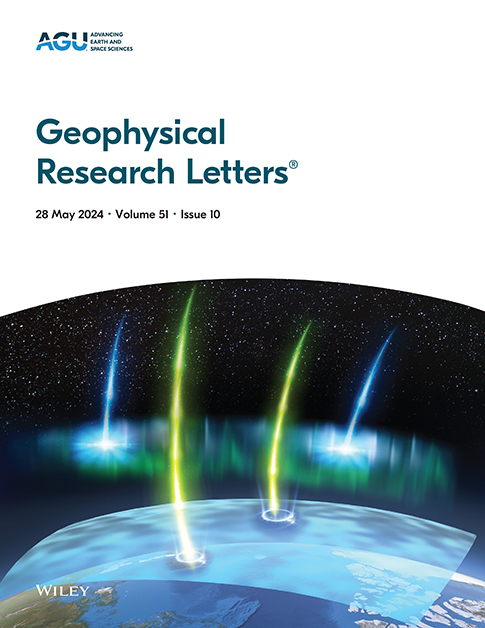Role of Accretionary Wedge in the Dynamic Rupture of Tsunami Earthquakes
IF 4.6
1区 地球科学
Q1 GEOSCIENCES, MULTIDISCIPLINARY
引用次数: 0
Abstract
Tsunami earthquakes occur in the shallow parts of subduction megathrust interfaces, which are often in contact with the accretionary wedge. Here, by conducting dynamic rupture simulations, we investigate how an accretionary wedge affects the rupture process of tsunami earthquakes and the resulting ground motions. We constructed a dynamic source model of the 2010 Mentawai tsunami earthquake (M吸积楔在海啸地震动力破裂中的作用
海啸地震发生在俯冲大逆冲界面的浅部,这些浅部常与增生楔接触。在这里,通过进行动态破裂模拟,我们研究了吸积楔如何影响海啸地震的破裂过程和由此产生的地面运动。以震源反演得到的滑动分布为约束,建立了2010年明打威7.8级海啸地震的动态震源模型。该模型再现了地震的基本观测特征,包括记录到的地面运动和推断出的缓慢破裂速度。模拟结果还表明,地震波能量被有效地捕获在吸积楔中,这有助于我们理解海啸地震比相同震级的普通地震产生更弱的地面运动的观测结果。
本文章由计算机程序翻译,如有差异,请以英文原文为准。
求助全文
约1分钟内获得全文
求助全文
来源期刊

Geophysical Research Letters
地学-地球科学综合
CiteScore
9.00
自引率
9.60%
发文量
1588
审稿时长
2.2 months
期刊介绍:
Geophysical Research Letters (GRL) publishes high-impact, innovative, and timely research on major scientific advances in all the major geoscience disciplines. Papers are communications-length articles and should have broad and immediate implications in their discipline or across the geosciences. GRLmaintains the fastest turn-around of all high-impact publications in the geosciences and works closely with authors to ensure broad visibility of top papers.
 求助内容:
求助内容: 应助结果提醒方式:
应助结果提醒方式:


